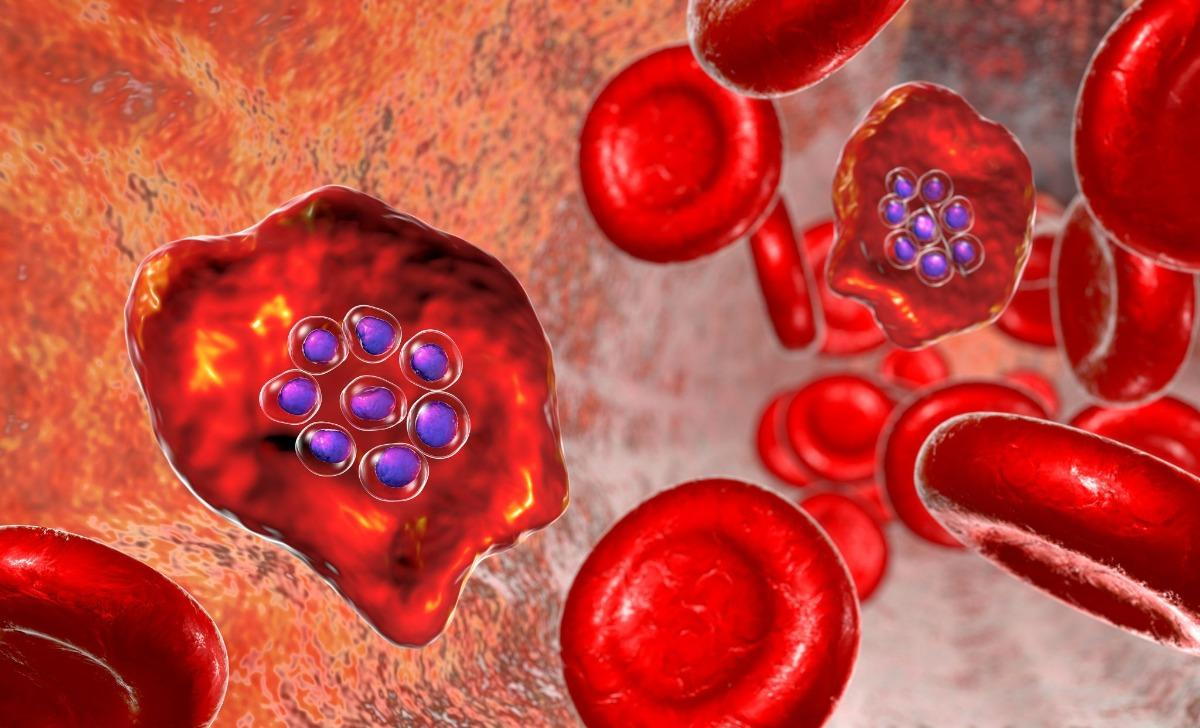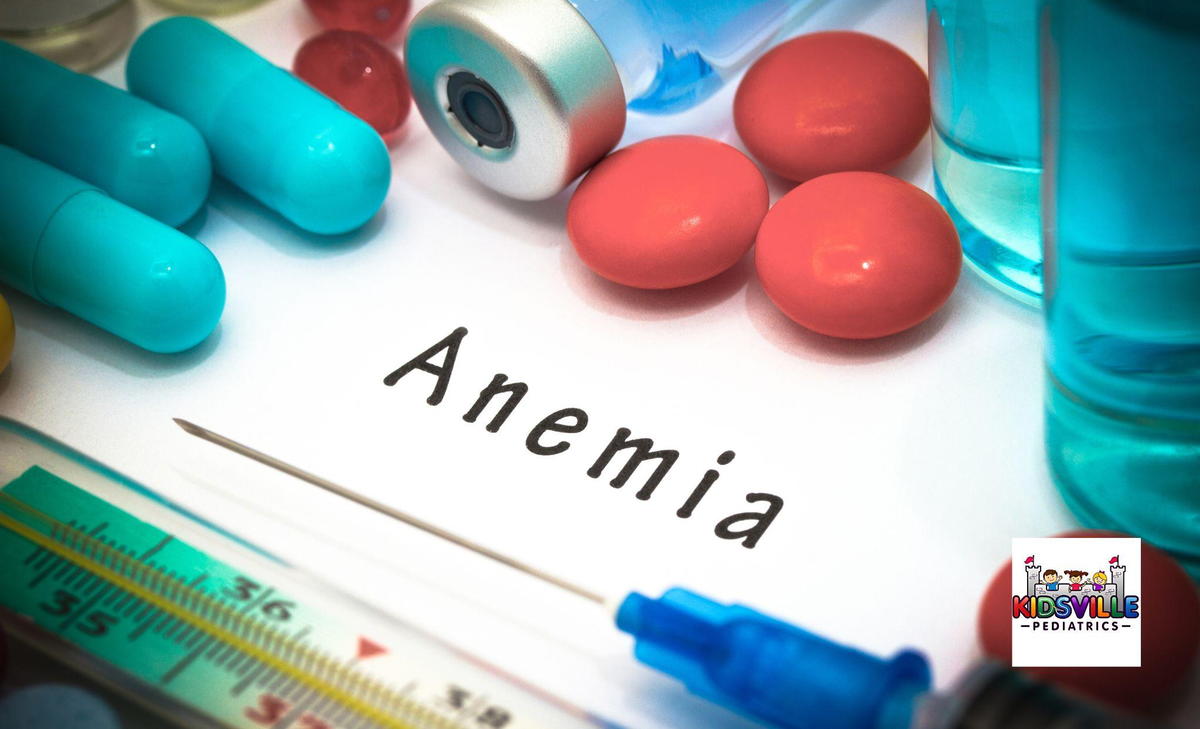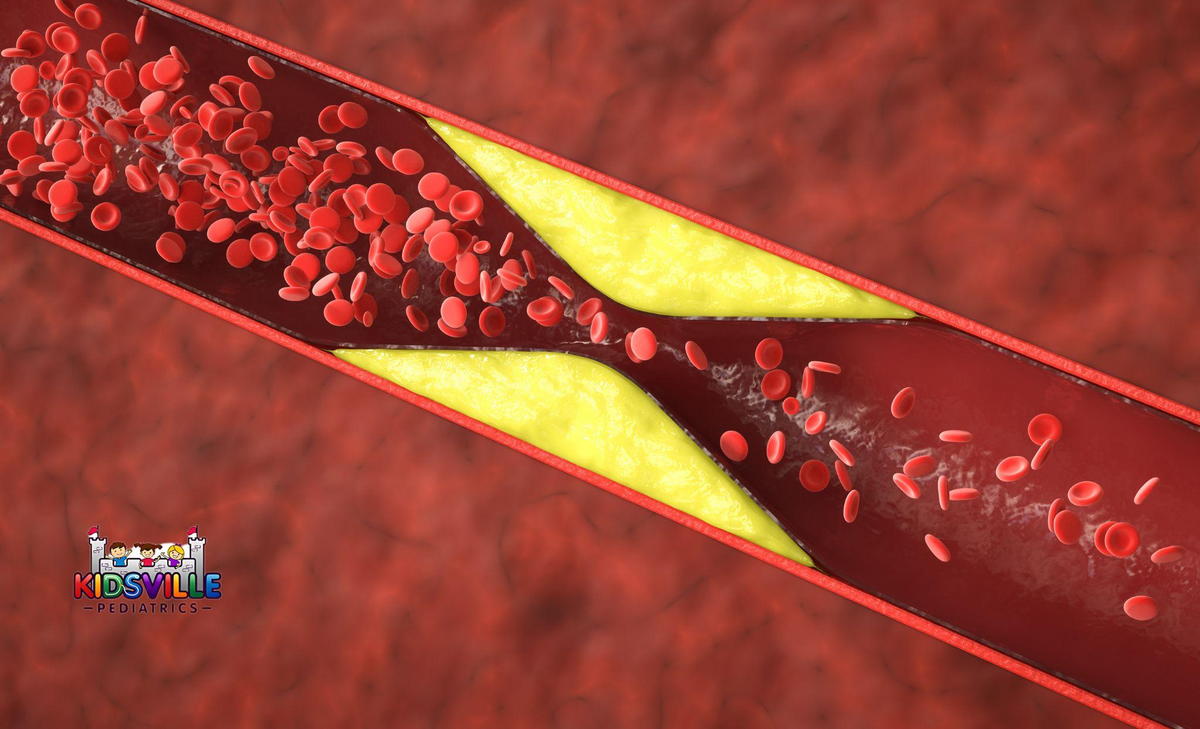
We know how concerning it can be to learn that you need to come face to face with pediatric hematology. Blood disorders in children are not uncommon and can often be confusing for parents trying to understand the symptoms, diagnoses, and treatment options. Knowing the basics about these conditions can make a significant difference in how you manage and respond to your child's health needs.
As a parent, it's essential to be informed about the various types of blood disorders in children that could affect your little one. These disorders can range from mild to severe and may present in different ways, depending on the specific condition. While some blood disorders are inherited and present from birth, others may develop over time and require timely medical attention to manage effectively.
Understanding the signs and symptoms of common blood disorders is crucial. From unusual fatigue and frequent infections to unexplained bruising or bleeding, being aware of what to look for can help you seek prompt medical advice and ensure your child receives the appropriate care.
At Kidsville Pediatrics McKinney, we’re committed to providing you with the information and support you need to navigate this aspect of your child's health. Our expert team is dedicated to offering comprehensive care and guidance, helping you understand the best course of action for your child’s well-being.
Pediatric Anemia

Pediatric anemia is a common issue where your child’s blood lacks enough red blood cells or hemoglobin, the protein that helps carry oxygen throughout the body. Understanding anemia, its causes, symptoms, and treatments can make a significant difference in your child’s health and well-being.
What Is Anemia?
Pediatric anemia occurs when a child has a reduced number of red blood cells or insufficient hemoglobin in their blood. This can lead to decreased oxygen delivery to various body tissues, which can affect your child’s overall health. At Kidsville Pediatrics McKinney, we recognize the importance of early detection and treatment to manage this condition effectively.
Common Types of Pediatric Anemia
Here are different types of anemia and their causes:
Iron Deficiency Anemia: The most common type, caused by insufficient iron, which is necessary for hemoglobin production.
Megaloblastic Anemia: Results from a deficiency in vitamin B-12 or folic acid, leading to abnormally large red blood cells.
Hemolytic Anemia: Occurs when red blood cells are destroyed faster than they can be produced, potentially due to infections or medications.
Sickle Cell Anemia: An inherited condition where red blood cells are abnormally shaped, leading to various health issues.
Cooley's Anemia (Thalassemia): Another inherited disorder causing abnormal red blood cells.
Aplastic Anemia: Involves the failure of bone marrow to produce adequate blood cells.
Causes and Risk Factors
Anemia in children can stem from several factors:
Loss of Red Blood Cells: Can occur due to bleeding or destruction of cells.
Inability to Produce Red Blood Cells: May result from nutritional deficiencies or bone marrow issues.
Destruction of Red Blood Cells: Often linked to inherited disorders or severe infections.
Children at higher risk include those with premature birth, low birth weight, or those from disadvantaged backgrounds. Diets lacking in essential nutrients, such as iron, can also increase the risk.
Symptoms of Anemia
The symptoms of anemia differ but usually include:
Increased heart rate
Breathlessness
Lack of energy
Dizziness or light-headedness
Pale skin or jaundice
If you notice these symptoms, it’s crucial to consult with a McKinney doctor for proper diagnosis and management.
Diagnosing and Treating Anemia
To diagnose anemia, your child may undergo several blood tests, including:
Hemoglobin and Hematocrit Tests: Measure the amount of red blood cells and hemoglobin.
Complete Blood Count (CBC): Provides detailed information about blood cells.
Peripheral Smear: Examines blood cells under a microscope.
Treatment depends on the kind and severity of the pediatric anemia. Options may include dietary changes, vitamin and mineral supplements, blood transfusions, or even medications. In severe cases, a referral to a specialist may be necessary.
Preventing Anemia
While some types of anemia are inherited, iron deficiency anemia can often be prevented by:
Breastfeeding or using iron-fortified formula for infants.
Avoiding excessive cow’s milk before age one.
Ensuring a diet rich in iron for older children.
When to Seek Help from Mckinney Pediatricians
If you observe symptoms of anemia in your child or if they haven’t been screened for anemia, contact a McKinney doctor. Early detection and treatment are key to managing anemia effectively and ensuring your child’s health and development.
At Kidsville Pediatrics McKinney, our goal is to provide comprehensive care and support for your child’s needs. If you have any concerns or questions about anemia, don’t hesitate to reach out to us for guidance and care.
Hemophilia in Kids
Hemophilia is a condition where the blood does not clot properly due to a deficiency in specific clotting factors. The most common clotting factors affected are factor VIII and factor IX. The severity of hemophilia depends on how low the levels of these clotting factors are in the blood.
Types of Hemophilia in Kids
There are three main types of hemophilia:
Hemophilia A: This type results from a deficiency of factor VIII. It’s the most common form, affecting about 9 out of 10 people with hemophilia. It’s also known as classic hemophilia or factor VIII deficiency.
Hemophilia B: Caused by a deficiency of factor IX, this type is sometimes referred to as Christmas disease or factor IX deficiency.
Hemophilia C: This less common type involves a deficiency of factor XI and usually doesn’t cause spontaneous bleeding but may lead to increased bleeding after surgery.
Causes of Hemophilia
Hemophilia types A and B are inherited genetic disorders passed from parents to children through a gene on the X chromosome. Since males have one each of the X and Y chromosomes, they are the ones who are more likely to be affected. Females have two X chromosomes and can be carriers of the hemophilia gene, potentially passing it on to their children.
For a son: If a female carrier passes the hemophilia gene, he will have the condition.
For a daughter: If a female carrier passes the hemophilia gene, she will be a carrier too.
In about one-third of cases, there is no family history of hemophilia, and the disorder may result from a new gene mutation.
Symptoms of Hemophilia
Symptoms of hemophilia are primarily related to uncontrolled bleeding, which can be external or internal. The severity of the symptoms correlates with the level of clotting factors in the blood.
Bruising: Easily bruised from minor accidents, often leading to large hematomas under the skin.
Easy Bleeding: Frequent nosebleeds, bleeding gums, and prolonged bleeding from minor cuts.
Joint Bleeds (Hemarthrosis): Bleeding into joints causing pain, swelling, and potential joint damage.
Muscle Bleeds: Swelling, pain, and redness due to bleeding in the muscles.
Brain Bleeds: Can occur from injury or spontaneously, leading to severe complications like blindness or neurological issues.
If you notice any of these symptoms, consult your McKinney pediatrician for an accurate diagnosis and appropriate care.
Diagnosing Hemophilia
To diagnose hemophilia, your pediatrician will consider your family and health history and conduct a physical exam. Blood tests used in diagnosis include:
Complete Blood Count (CBC): Checks red and white blood cells and platelets.
Clotting Time Tests: Such as prothrombin time (PT) and activated partial thromboplastin time (aPTT) to measure clotting ability.
Clotting Factor Levels: Determines the levels of specific clotting factors in the blood.
Genetic Testing: Identifies abnormalities in genes related to hemophilia.
Treatment Options for Hemophilia
Treatment for hemophilia aims to prevent bleeding complications and manage symptoms. Your McKinney pediatrician may refer you to a hematologist for specialized care. Treatment options include:
Clotting Factor Infusions: Regular infusions of factor VIII or IX to prevent bleeding and manage symptoms.
Joint Care: In cases of joint bleeding, treatment may involve surgery, immobilization, and physical therapy.
Blood Transfusions: For significant blood loss, transfusions may be necessary.
Managing Hemophilia
With proper management, many individuals with hemophilia can lead healthy lives. Key management strategies include:
Activity Modification: Engage in safe activities and avoid those that may cause injury. Consult your hematologist for guidance.
Pre-Surgery Care: Ensure proper clotting factor levels before surgeries or dental procedures to prevent bleeding.
Dental Hygiene: Maintain good dental care to prevent bleeding issues.
Medication Caution: Avoid aspirin or NSAIDs that can increase bleeding risk.
Discussing emergency plans with your McKinney pediatrician is also crucial.
When to Contact Your Healthcare Provider
If you notice these signs, contact your local pediatricians:
New or worsening symptoms
Uncontrolled bleeding
Scheduled for surgery or procedures
By staying informed and working closely with your McKinney pediatrician, you can help manage your child’s hemophilia effectively.
Childhood Leukemia

Childhood leukemia, the most common cancer in children and teens, affects the white blood cells. This type of cancer begins in the bone marrow, where abnormal white blood cells are produced. These cells rapidly multiply, entering the bloodstream and outnumbering healthy cells, which can lead to serious health issues.
What Increases the Risk of Childhood Leukemia?
The exact cause of childhood leukemia remains unknown, but certain factors may elevate the risk. It's important to note that having these risk factors doesn’t guarantee a child will develop leukemia.
Factors that may increase the risk include:
Inherited Disorders: Conditions like Li-Fraumeni syndrome, Down syndrome, or Klinefelter syndrome can raise the risk.
Inherited Immune System Issues: Disorders such as ataxia telangiectasia may be linked to a higher risk.
Family History: If a sibling, especially an identical twin, has leukemia, the risk for the child may be higher.
Exposure to Radiation or Chemicals: High levels of radiation, chemotherapy, or exposure to benzene can contribute to the risk.
Immune System Suppression: History of immune system suppression, such as from an organ transplant, can be a factor.
Regular checkups are essential for children with these risk factors to catch any issues early.
Types of Childhood Leukemia
Most cases of childhood leukemia are acute, meaning they develop quickly. Only a few cases are chronic and progress slowly. The main types include:
Acute Lymphoblastic Leukemia (ALL): This is the most common form, making up about 75% of childhood leukemia cases.
Acute Myelogenous Leukemia (AML): The second most common type.
Hybrid or Mixed Lineage Leukemia: A rare form that has characteristics of both ALL and AML.
Chronic Myelogenous Leukemia (CML): Rare in children.
Chronic Lymphocytic Leukemia (CLL): Extremely rare in children.
Juvenile Myelomonocytic Leukemia (JMML): A rare type occurring mostly in children under four years old.
Recognizing Symptoms of Childhood Leukemia
Detecting leukemia early can improve treatment outcomes. Symptoms may include:
Common Signs:
Fatigue or pale skin
Frequent infections and fever
Easy bleeding or bruising
Extreme weakness
Shortness of breath or coughing
Other Symptoms:
Bone or joint pain
Swelling in various areas (abdomen, face, arms, etc.)
Loss of appetite or weight
Headaches, seizures, or vision problems
Vomiting and rashes
If your child experiences any of these symptoms, consult your pediatric healthcare provider in McKinney for a thorough evaluation.
Diagnosing Childhood Leukemia
To diagnose leukemia, your child's doctor will conduct a comprehensive medical history review and physical exam. Diagnostic tests may include:
Blood Tests: To measure blood cell counts and appearance.
Bone Marrow Aspiration and Biopsy: Usually from the pelvic bone to confirm leukemia.
Lumbar Puncture: To check for leukemia cells in spinal fluid.
Cell Examination: Pathologists review cells under a microscope to confirm diagnosis and type.
Treatment Options for Childhood Leukemia
Treatment varies based on leukemia type and individual factors. The survival rates for childhood leukemia have improved significantly, and specialized care offers many advantages. Treatment options include:
Chemotherapy: The primary treatment, involving anticancer drugs administered orally or intravenously.
Targeted Therapy: Focuses on specific cancer cell components and usually has fewer side effects than traditional chemotherapy.
Radiation Therapy: Uses high-energy rays to kill cancer cells and shrink tumors.
Stem Cell Transplant: Involves replacing damaged bone marrow with healthy stem cells.
CAR T-Cell Therapy: A newer option where T cells are modified to better target and kill cancer cells.
Before starting treatment, discuss all options with your pediatric healthcare provider in McKinney to determine the best course of action for your child's condition.
Managing Childhood Leukemia
Effective management and treatment of childhood leukemia can help your child lead a healthy life. Ensure regular follow-ups, maintain open communication with the pediatric healthcare McKinney team, and follow prescribed treatment plans to achieve the best outcomes.
Blood Clotting Disorders in Children

Blood-clotting disorders involve excessive clotting in the blood. While clotting is a normal response to prevent excessive bleeding from injuries, abnormal clotting can occur without an injury. This can lead to serious issues by blocking veins or arteries, potentially disrupting blood flow to vital organs like the brain, lungs, and heart.
Causes and Risk Factors
Blood-clotting disorders in children can be inherited or acquired. Some common inherited disorders include:
Factor V Leiden: This condition increases the risk of deep vein thrombosis (DVT) and pulmonary embolism (PE). It’s the most common inherited clotting disorder and is particularly prevalent among children with European ancestry.
Prothrombin Gene Mutation (G20210): This mutation also raises the risk of DVT and PE, similar to Factor V Leiden, and is most common in children from European backgrounds.
Protein C and S Deficiencies: These conditions range from mild to severe, and many individuals with these deficiencies show no symptoms or harmful clots.
Antithrombin Deficiency: This condition significantly increases the risk of developing blood clots.
Symptoms and Diagnosis
Clotting disorders often present no symptoms. However, if a clot forms, you might notice:
Deep Vein Thrombosis (DVT): Swelling, pain, or redness in an arm or leg.
Pulmonary Embolism (PE): Symptoms include difficulty breathing, chest pain, rapid heartbeat, or coughing. If you suspect a PE, seek emergency care immediately.
To diagnose a blood-clotting disorder, a pediatrician will perform:
Blood Tests: To check for clotting factors and cell counts.
Genetic Tests: To identify inherited conditions.
Imaging Tests: Such as Doppler ultrasound or CT scans, to locate clots and assess blood flow.
Treatment and Management
Treatment typically involves medication and lifestyle adjustments:
Blood Thinners: These medications help prevent further clotting. They can be administered through IV, injections, or orally.
Aspirin: Sometimes used alongside blood thinners, but consult your pediatrician before use due to potential risks.
Lifestyle Changes: Encourage a healthy weight, regular exercise, and avoidance of smoking to help prevent clots.
Preventing Complications
While serious complications are rare, they can include issues with pregnancy later in life, pulmonary embolism, stroke, or even death. Working closely with your child’s healthcare provider can help manage and mitigate these risks.
If you notice symptoms of a clot or have concerns about your child's health, contact your McKinney pediatrician for guidance and support.
Conclusion: Pediatrician Near Me
Facing the complexities of pediatric hematology can be challenging, but having a clear understanding of the fundamentals can greatly simplify the process and improve your child’s care. Blood disorders, such as anemia, hemophilia, leukemia, and clotting disorders, each come with their own set of challenges and require tailored approaches for diagnosis and treatment.
Being attentive to the signs and symptoms of these conditions—like unusual fatigue, easy bruising, or frequent infections—can help you seek prompt medical attention and ensure your child receives the necessary care. Early detection and proactive management are crucial for effectively handling these disorders and enhancing your child’s quality of life.
Staying informed and engaged in your child’s healthcare is essential. If you have any concerns or notice any symptoms that could indicate a blood disorder, please reach out to your McKinney pediatrician. Together, we can manage your child’s health effectively, helping them lead a healthy, happy life.
For more information or to discuss any specific concerns about your child’s health, contact us at Kidsville Pediatrics McKinney. Your child’s well-being is our top priority, and we are here to support you every step of the way.
You may schedule an appointment online: https://www.kidsvillepeds.com/appointment/ Or visit/call our clinics: Kidsville Pediatrics Mansfield TX: 682-341-3910; 1759 Broad Park Circle S, Suite 201 & 205, Mansfield, TX Kidsville Pediatrics Southlake: 682-345-8010; 2813 W. Southlake Blvd Suite 100 Southlake, TX Kidsville Pediatrics McKinney: 469-885-9400; 5881 Virginia Pkwy. Suite 300 Mckinney, TX |
